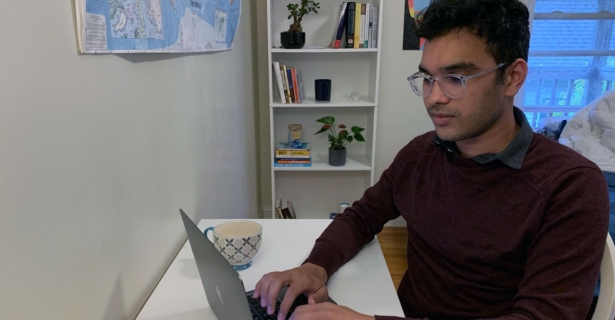"By placing confidence in violent means, one has chosen the very type of struggle with which the oppressors nearly always have superiority." - Gene Sharp
Being a student of International Relations, I have been trained so far through my academic career to think of security and conflict in a certain sense, where political goals are pursued through the threat or infliction of violence. Non-violent action and conflicts are typically relegated to a subtopic, an alternative unworthy of extensive attention. However, if there is one key takeaway from my experience as an Oslo Scholar at the Albert Einstein Institution, it is that non-violent action is a central organizing feature of political resistance and is highly relevant to domestic and world politics.
At the outset of the internship, I read From Dictatorship to Democracy: A Conceptual Framework for Liberation by Gene Sharp, the founder of the Institution. Here, Sharp asserts that in contrast to violent resistance, non-violent action attacks the very foundation of power and authority – the regime’s legitimacy. This explains why authoritarian regimes throughout history have been actively engaged in quashing and punishing dissent. Furthermore, incumbent regimes typically have the advantage in violent conflicts, with far greater resources than the challenger. Recent studies suggest that while irregular wars – those with or between asymmetric actors – last longer than other forms of violent conflict, such wars are most often won by the incumbent regime. Effective resistance must thus learn to adapt.
As an intern for Jamila Raqib, director of the Albert Einstein Institution, I have a lot of flexibility in choosing topics and projects to engage with. The project that has enthralled me the most is a case study that I have been developing of the Anti-Citizenship Amendment Act (CAA) protests that arose in India in December 2019. These protests were aimed at the passage of a new Act that would, for the first time, introduce a religious conditional to acquiring Indian citizenship in certain cases. In combination with a proposed National Citizen Register (NCR), which would require each national to prove their citizenship through ancestral documents, protestors feared such an Act would disenfranchise vast sections of Indian Muslims.
Being an Indian myself, this is a topic that is deeply personal to me. For this project, I was able to interview academics, attendees and organizers to further understand the motivations, composition, organization and strategies employed by these protests. These interviews allowed me to grasp a major political phenomenon not only from a theoretical and abstract angle, but from a deeply practical point of view. I became aware of the challenges of mobilization, of the risks undertaken by each individual protestor and organizer, of methods of truncating and even overturning the massive power asymmetry between these actors and the state, and of addressing divisions within a movement. Even as a researcher, I learned about the difficulties in acquiring details and data in contexts where information is weaponized, about building trust and networks, and about the sensitivity of such movements.
I have now learned to recognise the tremendous power woven into the intricate complexities of non-violent action. Even as the world continues to battle against a pandemic that has placed severe restrictions on mass demonstrations, these activists have adopted innovative and diverse methods to confront injustices. Whether it is opposing the military coup in Mali, or police brutality and racism in USA, or dictatorial trends in Belarus, or massive economic mismanagement in Lebanon, non-violent action remains a central organizing feature for resistance.
These past few months have left a deep impression on me. As I pursue a career in international relations, this internship will without a doubt play a key role in shaping my understanding of the nature and characteristics of domestic and international security and conflict, and the role of violence in them.

